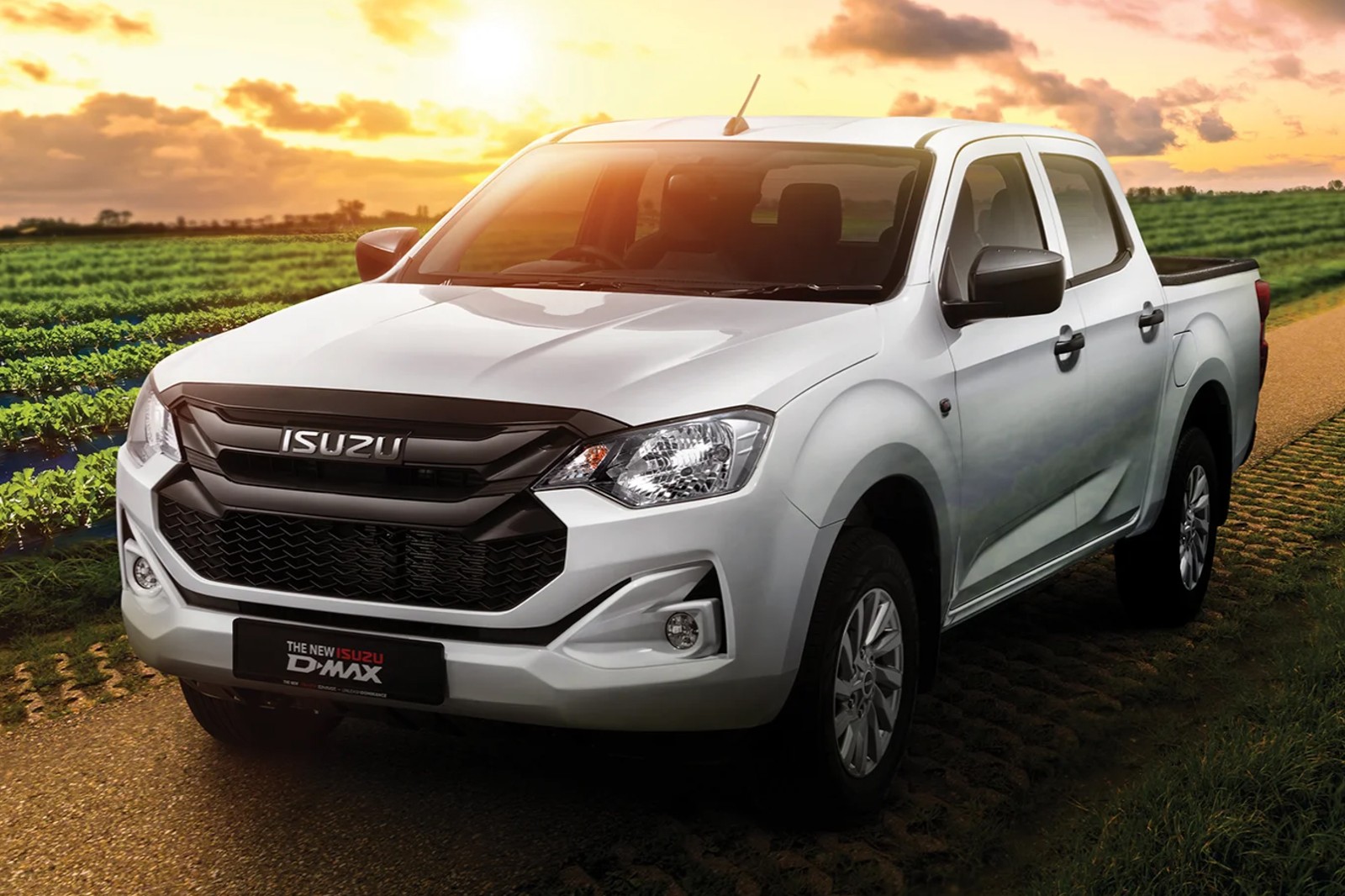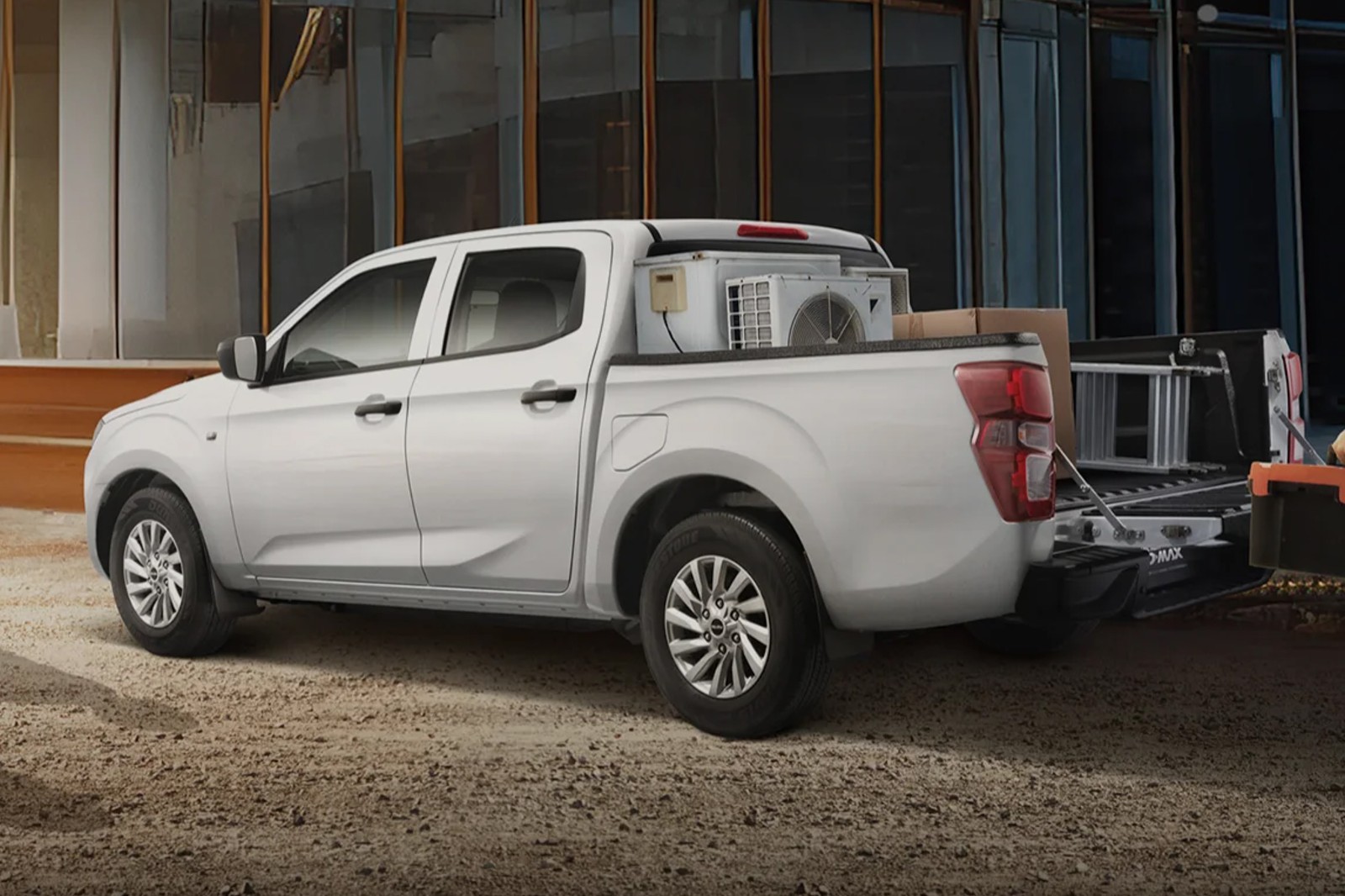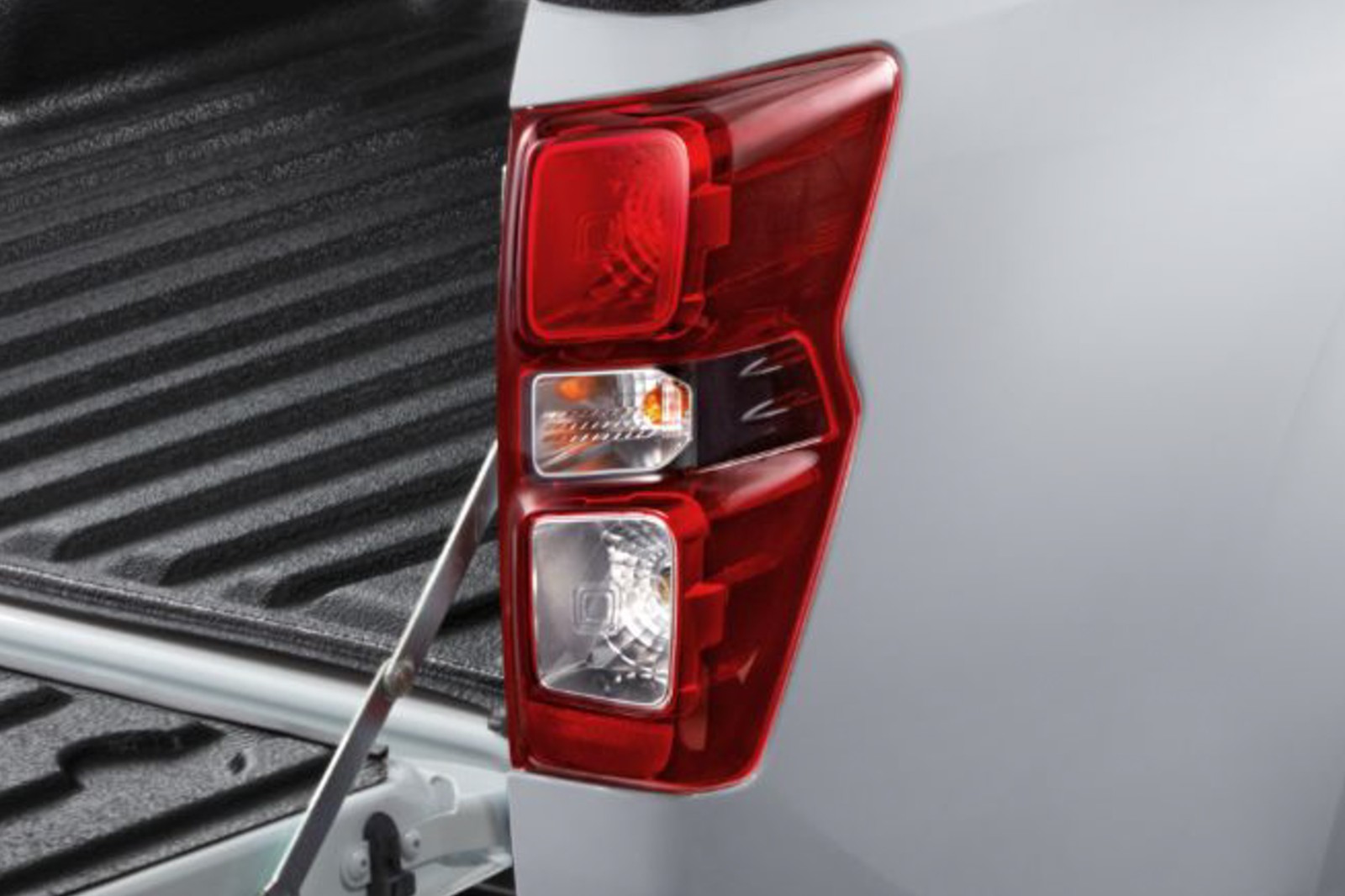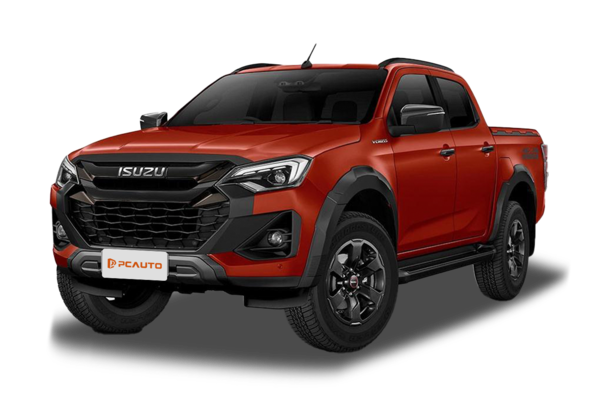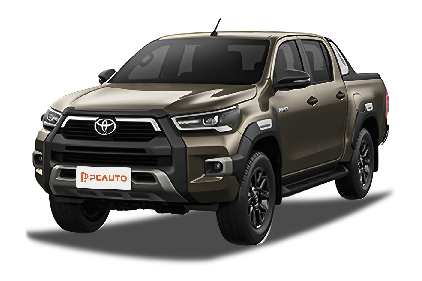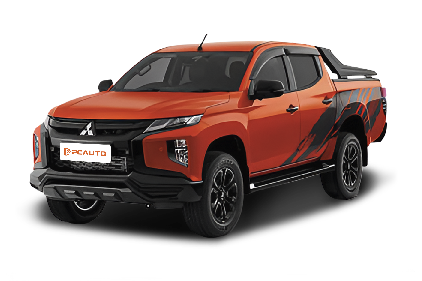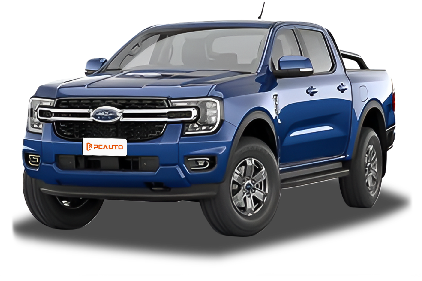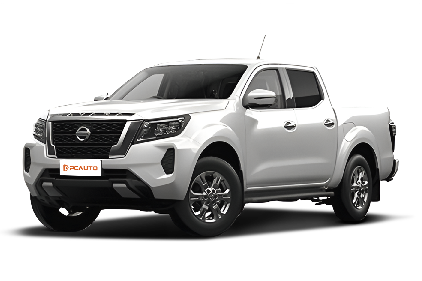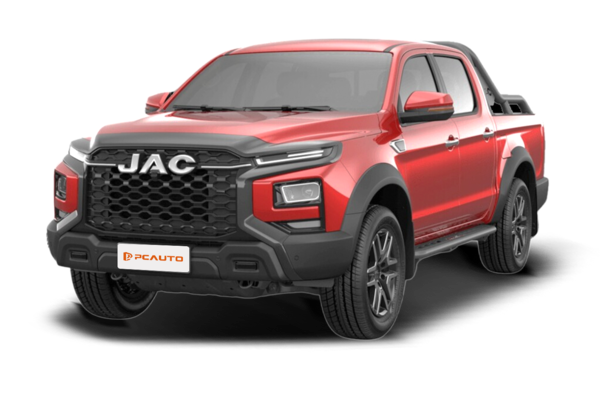Q
How much is D-Max 2025 in Malaysia?
As for the price of the 2025 Isuzu D - Max in Malaysia, the official specific price has not been announced yet. However, we can refer to the price range of the 2024 model (approximately RM94,949 to RM146,938). It is expected that the price of the new model may be similar or slightly increased, depending on the configuration level and power options (such as 1.9L or 3.0L diesel engines). As a popular model in the Malaysian pickup truck market, the D - Max has advantages including high durability, excellent off - road capability, and a practical cargo bed design, suitable for both commercial and family leisure use. The new model may upgrade intelligent driving assistance systems (such as adaptive cruise control or lane - keeping assist) and multimedia configurations. It is recommended to follow the latest information released on the Isuzu Malaysia official website or by authorized dealers. If you are considering a pickup truck model, you can also compare it with similar - level models like the Toyota Hilux or Mitsubishi Triton. But you need to make a comprehensive evaluation based on your personal needs (such as fuel consumption, payload capacity, or after - sales service). A test drive can give you a more intuitive feel for the vehicle's performance.
Q
How much is the Isuzu Dmax 2025?
The specific price of the 2025 Isuzu D - Max in Malaysia has not been officially announced yet. However, referring to the price range of the 2024 model (approximately RM94,949 to RM152,938), it is expected that the price of the new model will be slightly increased due to configuration upgrades and inflation factors. It is recommended to follow the Isuzu Malaysia official website or authorized dealers for the latest information. As a popular model in the Malaysian pickup truck market, the 2025 D - Max may continue to maintain its advantages in durability and off - road performance. It may also be equipped with updated 1.9L or 3.0L diesel engines and upgrade intelligent driving assistance systems such as adaptive cruise control and lane - keeping assist. When Malaysian consumers make a purchase, they can also compare it with similar models such as the Toyota Hilux and Mitsubishi Triton. However, it should be noted that pickup trucks registered as commercial vehicles in the West Malaysia (Peninsular Malaysia) are subject to specific regulations regarding road tax and insurance, while in East Malaysia (Sabah/Sarawak), private vehicle registration is allowed. These details may affect the final cost of vehicle use.
Q
Will the 2025 D-Max have a new engine?
Isuzu Malaysia has not yet officially announced specific information on whether the 2025 D - Max will be equipped with a brand - new engine under the hood. But if we go by Isuzu's typical product refresh cycle and global market trends, the 2025 D - Max could very well see some powertrain upgrades. We're probably talking about tweaks to the existing 3.0 - liter or 1.9 - liter diesel engines to boost fuel economy and meet stricter emission standards. There's even a chance they might throw in more advanced turbocharging tech or a mild - hybrid system to keep up with the ever - tightening green regulations. Malaysian buyers can definitely look forward to this pickup improving its performance while staying true to its reputation for reliability and toughness. One thing to keep in mind: the D - Max is a big hit in Malaysia, so any engine updates will likely be fine - tuned for local driving conditions and fuel quality. That means ensuring it handles our tropical heat and the wide range of road surfaces we throw at it. If you're keen, your best bet is to keep a close eye on Isuzu Malaysia's official website or visit authorized dealers for the latest information on exact specs and when it might hit showrooms.
Q
How big is the Isuzu Dmax 2025?
The 2025 Isuzu D-MAX isn't expected to see major changes in dimensions compared to the current model. For context, the existing double-cab D-MAX measures approximately 5265mm in length, 1870mm in width, and 1790mm in height, with a 3125mm wheelbase – that's pretty roomy for a mid-size pickup. The cargo bed, around 1495mm × 1530mm × 490mm, is practical for hauling gear or tackling outdoor adventures.
This truck has built a solid fan base in Malaysia, and it's easy to see why. People love its tough-as-nails reliability and off-road chops, which make it a perfect fit for the country's varied terrain. Under the hood, the 3.0-liter turbocharged diesel engine delivers the kind of grunt you need for towing or climbing steep hills, and the reinforced chassis takes whatever the road (or lack thereof) throws at it.
For Malaysian drivers, the D-MAX strikes a sweet spot. It's not so massive that it becomes a hassle to maneuver in the city, yet it's more than capable of handling both work duties and weekend getaways. All in all, it's a highly practical pickup that gets the job done.
Q
What is the fuel consumption of the 2025 D-MAX?
The fuel economy of the 2025 D - MAX varies by specific trim and drivetrain. According to official figures, you're looking at a combined fuel consumption roughly between 7.5 and 8.5 liters per 100 kilometers. Its specific performance depends on driving conditions and driving habits. The diesel engine of this car is designed to be highly efficient, so even during long - distance trips or when carrying heavy loads, the fuel consumption can be well - controlled. For Malaysian drivers, the D - MAX's fuel - sipping nature makes it a solid fit for our diverse local roads. Whether you're commuting in the city or dealing with bumpy rural roads, it strikes a good balance between economy and the power you need. It's worth keeping in mind that fuel use also gets affected by things like tire pressure, AC usage, and how well you maintain the vehicle. Regular servicing and a gentle driving style can definitely help you achieve even better fuel efficiency. As a pickup, the D - MAX really delivers when it comes to fuel efficiency, while still packing in strong cargo - hauling capabilities and off - road performance. It's an excellent choice for those who need a highly versatile vehicle.
Q
How much is the Isuzu D-Max 2025 model?
Pricing for the 2025 Isuzu D-Max in Malaysia is expected to vary depending on trim levels and configurations. Official figures haven't been released yet, but looking at the 2024 model's range – which sat around RM95,000 to RM150,000 – the new D-Max will likely hover in that ballpark, possibly with minor adjustments to account for any new features or tech upgrades.
As Isuzu's flagship pickup, the D-Max has built a solid fan base here in Malaysia, thanks to its reputation for toughness, that punchy 3.0-liter diesel engine, and impressive off-road chops. It's a real workhorse, perfect for folks in agriculture, construction, or anyone who loves hitting the trails for some outdoor adventure. The 2025 version should carry forward these core strengths, and we might even see some added smart driver assists or interior tweaks to keep it competitive in the game.
If you've got your eye on the D-Max, your best bet is to keep an eye on Isuzu Malaysia's official website or swing by your local authorized dealer for the latest deets on pricing and any ongoing promotions. And remember, when buying a pickup in Malaysia, don't forget to factor in road tax, insurance, and any mods you might want – all of these will play into your final ownership costs.
Q
Where is the 2025 Isuzu D-Max manufactured?
The 2025 Isuzu D-Max is primarily built in Thailand, a key manufacturing hub for Isuzu in Southeast Asia. The trucks rolling out of there aren't just for Malaysia – they get exported to other regions too. Thai factories have a solid rep for advanced production tech and tight quality control, which is how the D-Max maintains that strong build quality and reliability we've come to expect.
For Malaysian buyers, this likely means the 2025 D-Max will keep doing what it does best: being tough as nails and ready for off-road adventures. But there's more – we might see Isuzu's latest powertrain tech and safety goodies thrown into the mix. Think upgraded diesel engines and smarter driver assistance systems, maybe?
The D-Max has always been a big hitter in Malaysia's pickup scene, and it's easy to see why. People love its impressive payload capacity and how it stays steady no matter the road conditions. With the 2025 model hitting the scene, Isuzu's probably looking to lock down its spot at the top even more. Malaysian folks, keep your eyes peeled – this one's gonna be worth checking out once it lands locally.
Q
What engine is in the D-Max 2025?
The 2025 Isuzu D-Max is expected to hit Malaysian shores with its tried-and-tested 1.9-liter and 3.0-liter turbo diesel engines, both optimized and now compliant with the latest Euro 5 emission standards, striking a balance between performance and eco-friendliness. The 1.9L RZ4E-TC mill churns out 150 horsepower and 350 Nm of torque, making it a solid choice for daily commuting and moderate load-hauling. Step up to the 3.0L 4JJ3-TCX, and you're looking at 190 hp and a meaty 450 Nm of torque – that one's better suited for heavy-duty workloads or when the going gets tough off-road.
Word on the street is Isuzu might tweak the ECU for the 2025 model, potentially squeezing out better fuel efficiency or beefing up low-end torque – handy upgrades given Southeast Asia's hilly terrain and sweltering heat. Malaysian buyers should also keep an eye out for locally-specific touches, maybe beefed-up cooling systems or specialized diesel filters, all designed to handle our tropical climate.
Sure, rivals like the Toyota Hilux and Mitsubishi Triton offer similar engine displacements, but the D-Max has always stood tall with its reputation for bulletproof reliability and a chassis that can take a beating. At the end of the day, it pays to weigh up your actual payload needs and long-term maintenance costs before signing on the dotted line.
Q
What is the specs of Isuzu D-Max 2025?
The 2025 Isuzu D-Max continues to bring its tough, workhorse pickup DNA to the Malaysian market. Under the hood, you'll find an upgraded 3.0-liter turbocharged diesel engine cranking out 190 horsepower and a meaty 450 Nm of torque. It pairs with either a 6-speed manual or 6-speed automatic gearbox, and there's a part-time 4WD system on offer, making it just as capable on the tarmac as it is when the going gets rough.
Dimension-wise, the wheelbase stays put at 3125mm, while the cargo bed stretches to around 1.5 meters. With a payload capacity nudging close to a ton, this truck means business whether you're using it for work or weekend adventures. Step inside, and you're greeted by a 9-inch touchscreen that supports Apple CarPlay and Android Auto. Isuzu's also upped the ante with new driver assistance features, including adaptive cruise control and lane-keeping assist.
A key point for Southeast Asia – and Malaysia is no exception – is the D-Max's specially reinforced underbody rust protection, which is a smart move given the region's humid climate. Fuel efficiency has also been tweaked, now sitting at around 7.5 liters per 100km, and it meets Euro 5 emission standards.
Malaysian buyers will appreciate that the D-Max keeps Isuzu's reputation for low maintenance costs alive. The suspension has also been tuned specifically for local road conditions, striking a decent balance between carrying stability when loaded up and a comfortable ride for passengers. Sure, rivals like the Toyota Hilux and Mitsubishi Triton offer similar kit, but the D-Max tends to win over off-road enthusiasts thanks to its punchy torque and solid potential for modifications.
Q
What is the specs of the 2025 diesel engine?
The exact specs of 2025 diesel engines will vary by brand and model, but you can generally expect big improvements in fuel efficiency, emissions compliance, and performance. A lot of the new oil-burners will meet stricter Euro 6 or RDE (Real Driving Emissions) standards, for example. They'll also use tech like high-pressure common-rail fuel injection, variable geometry turbocharging (VGT), and selective catalytic reduction (SCR) to balance power and green credentials. You're probably looking at max power outputs in the 150-250 hp range, and torque figures will typically sit between 350-500 Nm – perfect for Malaysian drivers who need that strong low-end pull and love those long highway cruises.
It’s worth noting that with global emissions regulations getting tighter, some brands might scale back diesel development to focus more on hybrids or full electrification. But here in Malaysia, diesels still have a solid fan base, especially among commercial vehicle operators and off-road enthusiasts who swear by their fuel economy and bulletproof reliability. If you're in the market, my advice is to check the locally certified emission standards and make sure there's good after-sales support – that way, you're set for a smooth ownership experience down the line.
